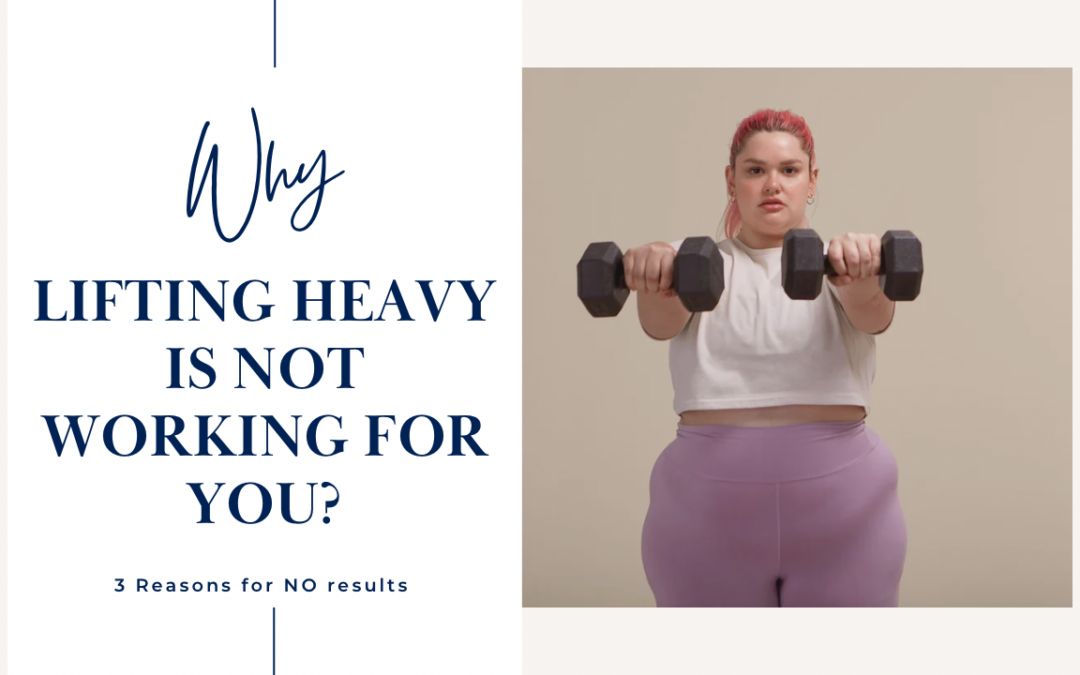
by EM2WL | Apr 18, 2025 | Strength Training
Why Lifting Heavy Isn’t Working for You (3 Mistakes to Fix ASAP)
So you’re lifting heavy. You’re doing the work. You’re showing up consistently.
But your body? It’s not changing.
What gives?
Here’s the truth: lifting heavy is powerful, but it’s not a magic pill. And if it feels like it isn’t working for you, chances are you’re making one (or more) of these 3 common mistakes.
Mistake #1: You’re Not Progressively Overloading
Lifting the same weights year after year might keep you from sliding backward, but it won’t move you forward.
Your body needs a reason to adapt. A reason to grow.
Progressive overload is the key. And it doesn’t just mean lifting heavier (though that helps). You can also:
- Increase your reps
- Add more sets
- Slow down the tempo (hello, negatives!)
- Track your workouts so you know when you’re actually improving
If your body isn’t being challenged, it has no reason to change.
Mistake #2: You’re Lifting Heavy While Undereating
Muscle doesn’t grow without fuel. Period.
A lot of women are eating far too little while training hard—whether it’s from tracking apps that set your calories too low, point systems that prioritize weight loss over nourishment, or intermittent fasting plans that inadvertently slash your intake.
Your body is being asked to build while being starved. It’s like firing the entire construction crew and still expecting the house to be built.
Calories are your workers. Protein is your bricks. No fuel = no gains.
Mistake #3: You’re Not Recovering Enough
Muscle doesn’t grow during workouts. It grows between them.
And recovery becomes even more critical as we age. That means:
- Rest between sets (stop rushing!)
- Full rest days (no, walking isn’t cheating)
- Deload or recovery weeks
- Prioritizing sleep, hydration, and stress reduction
If you’re constantly pushing but never recovering, you’re not getting stronger. You’re just getting exhausted.
Watch the Full Breakdown:
Why Lifting Heavy Isn’t Working (And How to Fix It)
We dive into:
- The 4 ways to apply progressive overload
- How undereating quietly sabotages your gains
- Why “no days off” is killing your results
Want a Training Plan That Does It Right?
The EM2WL Training App is designed for women who want to get strong, defined, and fueled properly. Inside, you get:
- Structured progressive overload
- Built-in rest & deload weeks
- Video guidance + macros coaching
- A smarter path to long-term results
Ready to stop spinning your wheels? Check out the app here
And if you’re brand new to the Eat More 2 Weigh Less method, start with the Quick Start Guide. It’ll help you figure out how much you should be eating—and why that number might surprise you.
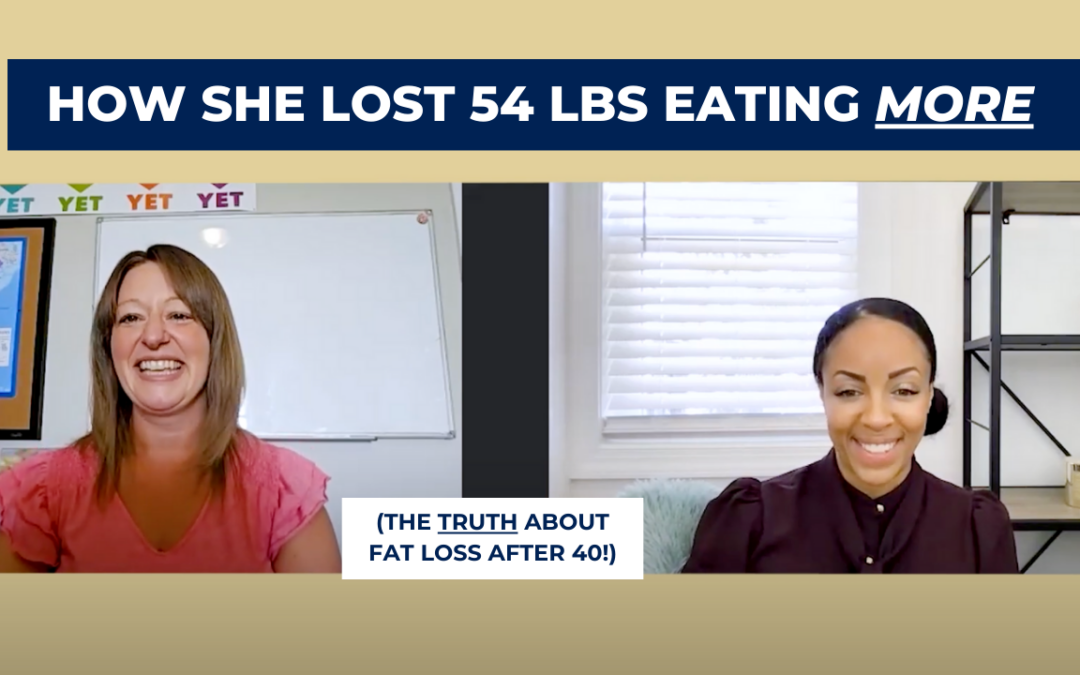
by EM2WL | Mar 26, 2025 | Testimonials
How Eating More Helps With Weight Loss
“I Thought My Body Was Broken…”
Stephanie was doing everything right—or so she thought.
She was doing keto, working out, and following all the diet rules. But instead of getting results, she felt exhausted, weak, and stuck.
At her lowest point, she could barely push her baby’s stroller without feeling like she’d collapse.
That’s when she realized something had to change.
The Shift That Changed Everything
Instead of cutting more, Stephanie made a bold move: she ate more.
Not just a little more—but thousands more calories than she ever thought possible while still losing fat.
She reset her metabolism instead of wrecking it further.
She built strength instead of punishing herself with cardio.
She lost 54 lbs while eating 2500+ calories a day—and over 250g of carbs!
Yes, you read that right.
Breaking Free from the Dieting Cycle
For years, Stephanie thought that eating less was the only way to lose weight.
But here’s what she discovered instead:
✅ Low calories = Low metabolism. Dieting for years slowed her body down.
✅ Eating more = Energy + Strength. Fueling her body allowed her to finally see results.
✅ More protein, more carbs, no starvation. She wasn’t just losing weight—she was getting stronger.
And the best part?
She didn’t do a single minute of cardio to lose the weight.
Yes, eating MORE helps with weight loss … no, you don’t have to overcompensate by adding cardio!
How She Pushed Past the Fear of Eating More
Let’s be honest—increasing calories is terrifying when you’ve been told your whole life that less is better.
Stephanie felt all of those fears, too.
❌ “What if I gain even more weight?”
❌ “What if my metabolism is too slow to handle it?”
❌ “What if this doesn’t work?”
But she trusted the process. And after months of fueling her body the right way, the fat started coming off—without starvation, without exhaustion, and without spending hours on a treadmill.
Now? She’s feeling lighter, stronger, and more confident than ever.
If you’ve ever felt stuck, frustrated, or afraid to eat more, Stephanie’s story will change the way you see weight loss forever.
Watch the full interview to see exactly what she did
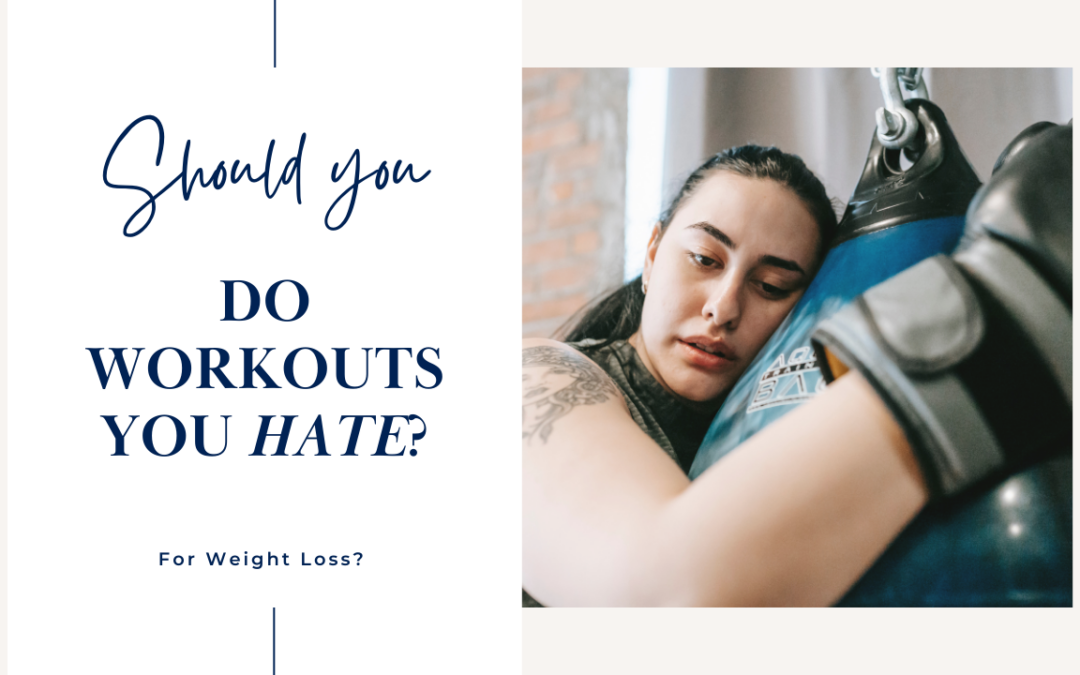
by EM2WL | Mar 20, 2025 | Motivation
Should You Do Workouts You Hate? The Truth About Motivation & Results
Be Honest—Do You Actually Enjoy Your Workouts?
If you’ve ever forced yourself through a workout you hated because you thought it was the only way to get results, you’re not alone.
A lot of women—especially over 40—believe they have to do certain workouts, even when they dread every second. Running, HIIT, barre, Pilates… if you’ve ever thought, “I need to do this because it burns the most calories”—you’re not crazy. But you might be setting yourself up for failure.
So let’s break it down: Should you do workouts you don’t like? Or is there a better way to reach your goals?
The #1 Reason People Think They Have to Do Certain Workouts
A common belief in fitness is that more pain = more progress.
That’s why so many women force themselves through workouts they hate, thinking:
✅ “Running is the best way to lose weight.”
✅ “HIIT burns the most calories, so I need to suffer through it.”
✅ “If I want to tone, I have to do Pilates, even though I hate it.”
But here’s the reality check: You don’t need to do workouts you hate just because they’re trendy or seem ‘effective.’
If you force yourself to do something miserable, how long will you actually stick with it?
And more importantly—is that workout even helping you reach your goal?
Should You Force Yourself to Do Workouts You Hate?
The real answer? It depends.
Not all workouts are created equal. Some will give you the best results, even if they aren’t your absolute favorite. But others? If they’re making you miserable and they don’t align with your goals, why bother?
Here’s a simple 3-Category Framework to help you decide what’s worth keeping:
1️⃣ Workouts You LOVE (Keep Doing These!)
These are the workouts that make movement natural for you. They may not be the most ‘efficient’ for fat loss or muscle-building, but they keep you consistent.
✔ Dancing, hiking, swimming, group classes
✔ Anything that makes exercise feel fun
✔ If you love it, it’s keeping you moving—so don’t stop!
2️⃣ Workouts You DON’T LOVE (But Give the Best Results)
These workouts may not be your favorite, but they’re crucial for your goals.
Strength training falls into this category for a lot of women.
You don’t have to love every rep—but you should respect the results it gives.
If you want to lose fat, build muscle, and reshape your body, skipping strength training is NOT an option.
3️⃣ Workouts You HATE (And Don’t Align With Your Goals)
If a workout is both miserable and ineffective, it’s time to let it go.
Hate running and only do it for fat loss? You don’t have to run.
Dread HIIT but feel like you ‘should’ do it? Not necessary.
Avoid lifting because you think it’ll make you bulky? You’re missing out.
Bottom line: You don’t have to love every workout, but you also don’t need to suffer through something that isn’t serving you.
The Real Reason You Might ‘Hate’ a Workout
Before you ditch a workout completely, ask yourself:
❌ Do I hate it because it makes me feel weak or inexperienced?
❌ Am I avoiding it because I don’t understand why it’s necessary?
❌ Am I doing it wrong (bad form, wrong weight, poor pacing)?
Sometimes, it’s not the workout—it’s how we’re approaching it.
Example: The first time you lift heavy, it might feel uncomfortable. But in 3 months? You could feel strong as heck and wonder how you ever lived without it.
If a workout is giving you results, give it 4-6 weeks before deciding it’s not for you. But if it’s miserable AND unnecessary? Ditch it.
How to Make ‘Not-So-Fun’ Workouts More Enjoyable
You may never love every workout, but you can make them more bearable (and even fun!).
✅ Pair it with something you love → Listen to an audiobook, podcast, or hype music.
✅ Make it social → Train with a friend or join a community.
✅ Focus on progress, not just the workout → Seeing yourself get stronger is way more motivating.
✅ Switch up the format → Hate slow strength training? Try circuits, supersets, or functional strength moves.
Sometimes, you don’t need a more fun workout—you just need a smarter way to approach the ones that work.
Final Takeaway: Do You Need to Love Your Workouts?
No, you don’t have to love it.
Yes, you DO need to do what works.
The key is balance:
✔ Do the workouts you love for consistency.
✔ Do the workouts that get results, even if they’re not your favorite.
✔ Let go of the ones that make you miserable AND don’t serve your goals.
Watch the Full Breakdown Here
And if you’re ready for a structured plan that takes the guesswork out of what actually works, check out the EM2WL Training App—it’s designed to help you reset your metabolism, build muscle, and burn fat without wasting time on workouts that don’t work.
Let’s train smart, not suffer!
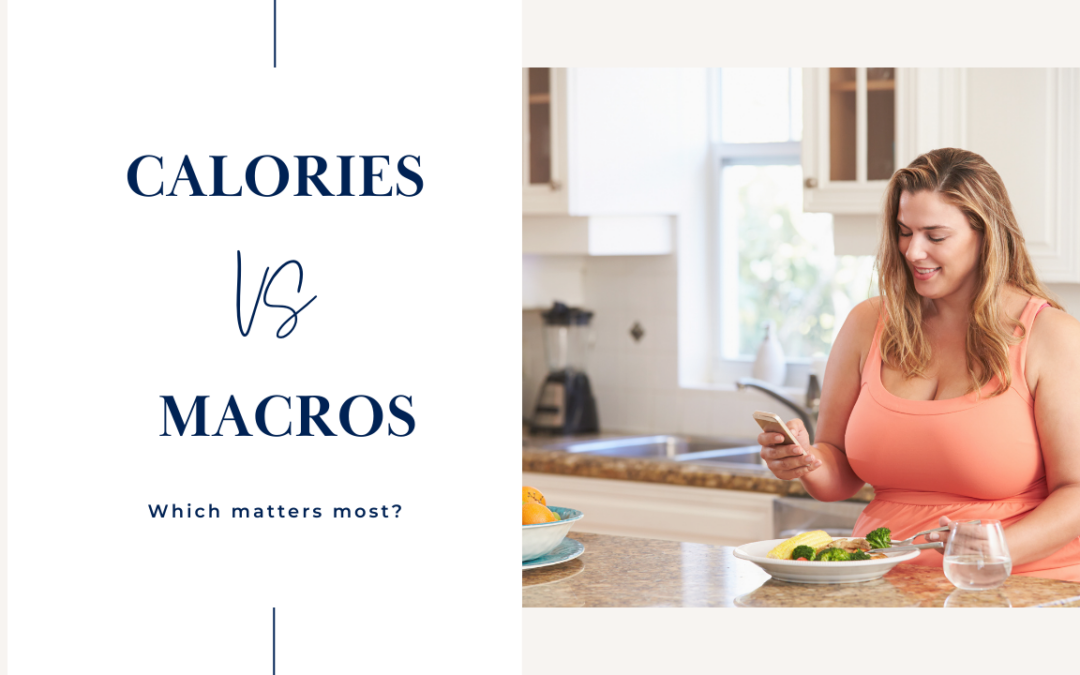
by EM2WL | Mar 14, 2025 | Fat Loss / Cutting
Calories vs. Macros vs. Clean Eating: What Really Matters for Fat Loss?
The Great Nutrition Debate
If you’ve ever tried to lose fat, gain muscle, or just “eat healthier,” you’ve probably come across conflicting advice:
- “Just count your calories!”
- “Macros matter more than calories!”
- “Just eat clean and don’t worry about numbers!”
So which one is actually right?
The truth is… they ALL matter. The key is knowing how they work together and where you should put your focus at different stages of your journey.
In today’s post (and video), we’re breaking it all down using a simple money metaphor that makes understanding nutrition effortless.
Watch the full breakdown on YouTube here!
Calories = Your Budget
Think of calories as your bank account.
Just like your finances, how much you “spend” (burn) vs. how much you “earn” (eat) determines whether you:
✔ Lose weight → You’re spending (burning) more calories than you’re taking in
✔ Gain weight → You’re earning (eating) more calories than you’re spending
✔ Maintain weight → Your spending and earning are balanced
But here’s the catch… where you “spend” those calories determines the outcome.
If you spent your entire paycheck on fast food and coffee, how would that work out for you in the long run? Probably not great. The same goes for your caloric intake—it’s not just about the amount; it’s about how you use it.
Macros = What You Spend Your Money On
Now, let’s talk about macros (protein, carbs, fats).
If calories are your budget, macros are what you’re spending that budget on.
Protein = Essential expenses (rent, groceries, bills) → Supports muscle, metabolism, and recovery
Carbs = Lifestyle expenses (shopping, entertainment, fun) → Fuels workouts, energy levels, and brain function
Fats = Investments (retirement, savings) → Supports hormones, brain health, and long-term function
Just like in real life, if you overspend in one area while neglecting others, you’ll run into trouble.
For example:
- Eating in a calorie deficit but not getting enough protein? You’ll lose muscle instead of fat.
- Eating “low-fat” but not enough carbs? You might feel sluggish, cranky, and struggle to recover from workouts.
- Only focusing on hitting your calories without caring about macros? You may lose weight but still feel “skinny fat” with little muscle tone.
This is why macros matter—because they determine whether your weight loss comes from fat or muscle.
Clean Eating = Getting the Most Bang for Your Buck
Finally, where does clean eating fit into all of this?
Think of it like shopping smart.
You can buy cheap, low-quality food (processed, nutrient-poor options), or you can invest in nutrient-dense foods (lean proteins, whole grains, healthy fats).
The cleaner you eat, the more nutrients you get per calorie—which often means you can eat more food while staying within your calorie and macro targets and/or simultaneously tackle “health” concerns while losing weight.
For example:
100 calories of avocado = Healthy fats, fiber, vitamins = Keeps you full and fuels your body
100 calories of donuts = Sugar, little nutrition = Spikes your blood sugar, leaves you hungry an hour later
The choice doesn’t have to be all or nothing—but the more nutrient-dense foods you include, the better your energy, satiety, and body composition will be.
So, What’s the Right Approach?
When it comes to calories vs macros (or “clean eating”), the most successful approach isn’t one or the other—it’s knowing how to use them together:
✅ Start with calories → Make sure you’re eating enough (but not too much) for your goals
✅ Dial in your macros → Ensure you’re prioritizing protein and balancing your intake for optimal fat loss and muscle gain
✅ Focus on food quality → Prioritize whole, nutrient-dense foods for better results, better satiety, and better health
The goal isn’t perfection—it’s awareness and balance.
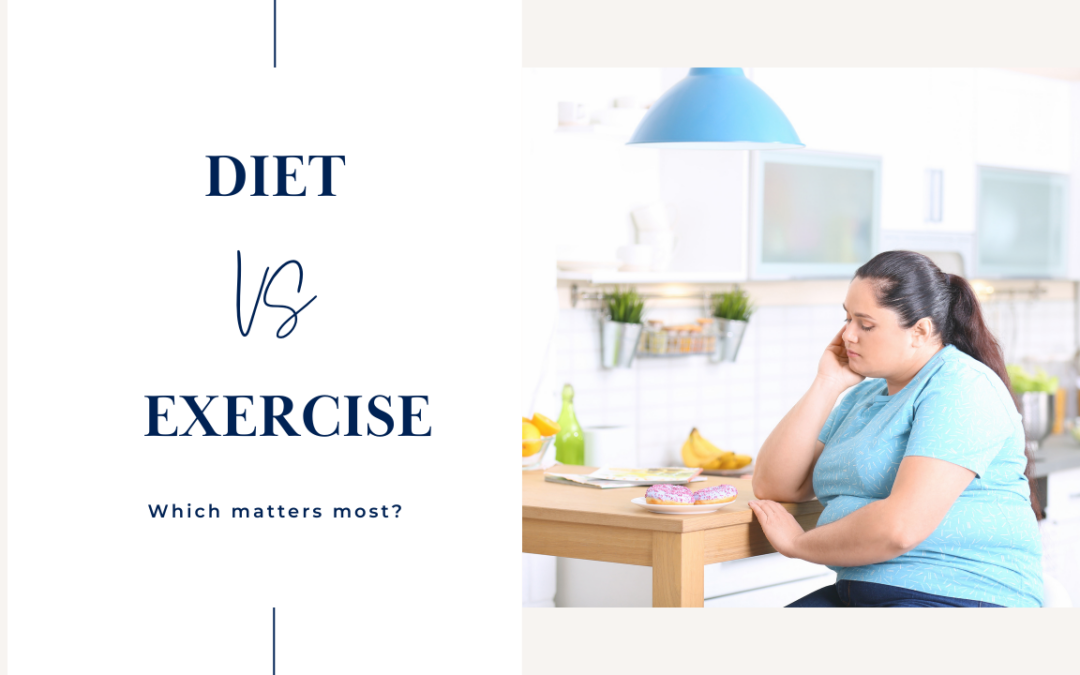
by EM2WL | Mar 9, 2025 | Fat Loss / Cutting
If you’re over 40 and struggling to lose fat, what’s more important — diet or exercise?
Should you be counting every calorie? Hitting the gym daily? Skipping carbs? Doing hours of cardio?
The answer isn’t as simple as “just eat less” or “just work out more.” Fat loss after 40 requires a strategic approach—one that balances both nutrition and exercise in a way that supports your metabolism, preserves muscle, and leads to sustainable results.
So, does diet or exercise matter more? Let’s break it down.
Why Most Women Over 40 Struggle with Fat Loss
Before we dive into diet vs. exercise, let’s talk about why fat loss gets harder with age.
After 40, several biological changes impact your ability to lose fat:
Metabolism slows down—especially if you’ve spent years yo-yo dieting.
Muscle loss accelerates—losing muscle means burning fewer calories at rest.
Hormonal changes impact fat storage—especially around the midsection.
Because of these factors, what worked in your 20s and 30s doesn’t always work now. That’s why it’s crucial to focus on the right combination of nutrition and strength training.
The Role of Diet in Fat Loss (Why It’s Essential)
Fact: Nutrition accounts for about 70-80% of fat loss results.
You cannot out-train a bad diet. If your goal is fat loss, what you eat determines whether you see progress or stay stuck.
Here’s why diet is crucial for fat loss after 40:
1. Calories Control Fat Loss
Fat loss comes down to energy balance—you must eat fewer calories than you burn. But extreme dieting is NOT the answer. Women over 40 who eat too little often:
- Burn muscle instead of fat
- Slow down their metabolism
- Experience constant cravings and energy crashes
The key? A moderate calorie deficit—enough to lose fat but still fuel your workouts and recovery.
2. Protein Preserves Muscle & Boosts Metabolism
After 40, losing muscle = a slower metabolism. Eating enough protein helps:
✔️ Preserve muscle while losing fat
✔️ Keep you fuller longer (reducing cravings)
✔️ Support workout recovery
Aim for: 0.8–1g of protein per pound of body weight.
Good protein sources include:
- Lean meats (chicken, turkey, fish)
- Eggs & dairy
- Plant-based sources (lentils, tofu, tempeh)
3. Balanced Macros = Sustainable Fat Loss
Keto, fasting, and low-carb diets aren’t magic—they just help create a calorie deficit. But cutting out entire food groups often leads to burnout and muscle loss.
✔️ Carbs provide energy for workouts and recovery.
✔️ Healthy fats support hormones and satiety.
Instead of extreme diets, focus on a balanced, sustainable approach—one that fuels your metabolism instead of slowing it down.
Why Exercise is Still Critical for Fat Loss
Fact: Exercise doesn’t “burn off” a bad diet—but it’s KEY for body composition, metabolism, and long-term fat loss success.
Strength Training = More Muscle, Faster Metabolism
Most women over 40 focus on cardio for fat loss—but lifting weights is even more important.
Why?
✔️ Muscle burns more calories at rest (even while you sleep!)
✔️ Lifting preserves muscle while dieting (preventing the “skinny fat” look)
✔️ Strength training reshapes your body in a way cardio alone can’t
How to train for fat loss?
– Lift weights 3–5x per week with compound movements (squats, deadlifts, presses).
Cardio is a Tool—Not a Fat Loss Requirement
Cardio is great for heart health and can help with fat loss if used correctly—but it’s NOT the best way to lose fat.
❌ Too much cardio burns muscle and slows metabolism.
❌ Excessive cardio triggers hunger cravings, making fat loss harder.
✔️ The best approach? Moderate cardio (walking, HIIT, or short sessions of steady-state).
Use cardio strategically:
Daily movement (8-10k steps per day) is more effective than endless treadmill sessions.
So… What Matters More? Diet or Exercise?
If your goal is fat loss, here’s the truth:
Diet creates fat loss.
Exercise determines what your body looks like when you lose the fat.
The best approach for fat loss after 40:
Nutrition first: High-protein, balanced macros, moderate deficit.
Strength training: Lift heavy 3-5x per week to preserve muscle.
Smart cardio: Use as a tool, not the foundation of your fat loss plan.
When combined, these strategies lead to long-term, sustainable fat loss—WITHOUT extreme dieting or hours of cardio.
Watch the full video where I break this all down:
Final Takeaway: Diet + Strength Training = The Winning Formula
If you’ve been stuck in a cycle of restrictive dieting, endless cardio, and slow results, it’s time to rethink your approach.
✔️ Prioritize protein & strength training.
✔️ Stop obsessing over cardio.
✔️ Fuel your body instead of depriving it.
Plugin by Social Author Bio






Recent Comments